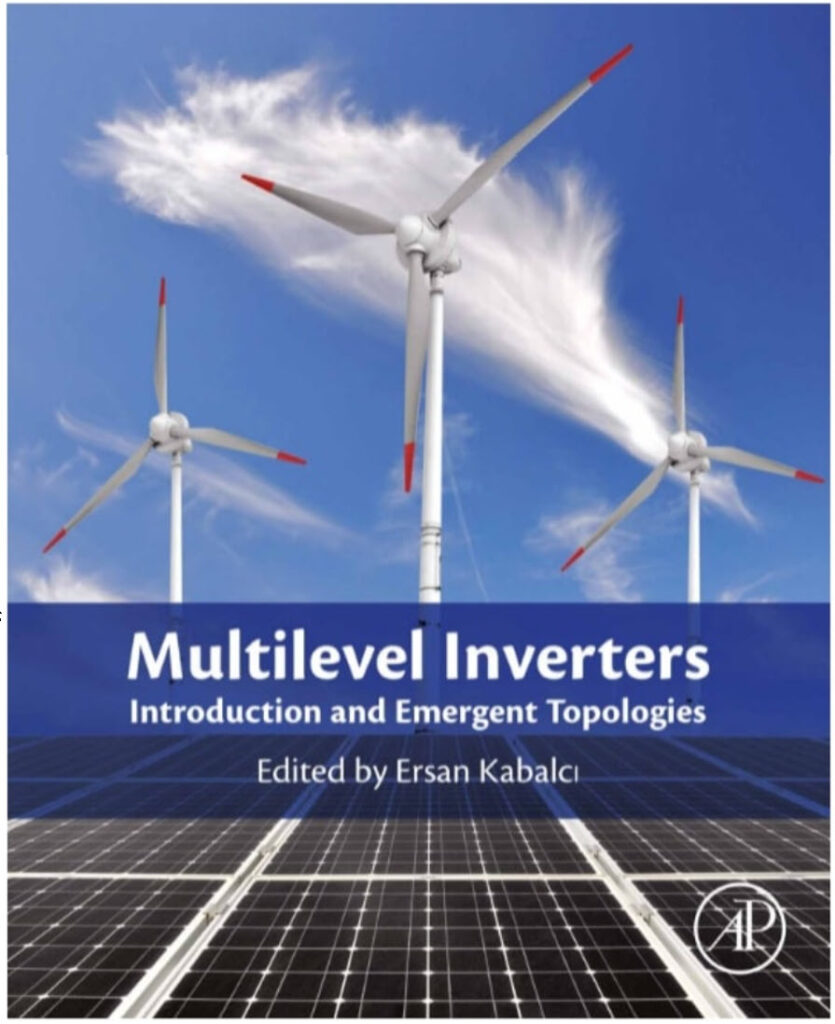Book review by Alexander Apostolov, USA
1st Edition

Inverter based renewable energy resources have been accepted all over the world as one of the solutions that can help us address the global warming trends that the earth is facing. While wind and solar power plants deliver clean energy which helps the environment, they represent significant challenges to the protection, automation and control of electric power grids. This is because the behavior of the inverters that interface them with the power system is very different from what the synchronous machines that we are used to is.
That is why it is very important for the specialists in our industry to get a better understanding of the principles of the inverters technology and the trends in its development so we can think of what methods we need to develop to be able to protect and control the electric power system under abnormal conditions.
The book “Multilevel Inverters: Introduction and Emergent Topologies,” as the title indicates is focused on what is considered to be the future of this technology that will be able to address many of the issues that we are facing today.
The material in the book is arranged in seven chapters, each covering a specific topic of interest.
The book is the result of the efforts of 15 academics from Europe, North and South America and the Middle East with Prof. Dr. Ersan Kabalci as the editor.
He is with the Department of electrical and electronics engineering, Faculty of engineering and architecture of Nevsehir Haci Bektas Veli University, Nevsehir, Turkey.
Chapter 1 is an introduction and an overview of multilevel voltage-source inverters. It starts with conventional inverter topologies and control methods followed by analysis of architectures of multilevel inverters that are presented in hierarchical order. Design procedures of controllers and control methods are also described.
The next chapter introduces the operating principles, switching states and their influence, switch fault analysis of neutral-point-clamped (NPC) and T-type multilevel inverters. It also includes simulation studies for such inverters.
Chapter 3 is a detailed introduction of conventional H-bridge multilevel inverters and topologies, including control methods and simulation analysis.
Chapter 4 introduces one of the emergent multilevel inverters – the packed U-cell topology with its control methods and applications.
Chapter 5 is dedicated to the operation, control, and application of modular multilevel converters (MMC). It looks at common submodules such as H-bridge, full bridge, flying capacitor and cascaded half-bridge topologies and their high-power industrial applications.
The next chapter introduces asymmetrical multilevel inverter topologies, with simplified switched capacitors and cascaded asymmetrical and similar other applications.
The final Chapter 7 presents the resonant and impedance-source multilevel inverters. Their operating principles and a soft switching operation are introduced.
The goal of the authors is to help electrical, and electronics engineers interested in research in the field of power electronics and converters, as well as to inform about the recent progress on several application areas of multilevel inverters.
Multilevel Inverters: Introduction and Emergent Topologies
by Ersan Kabalci (Editor)
Publisher: Academic Press
ISBN-10: 0128216689
ISBN-13: 978-0128216682








